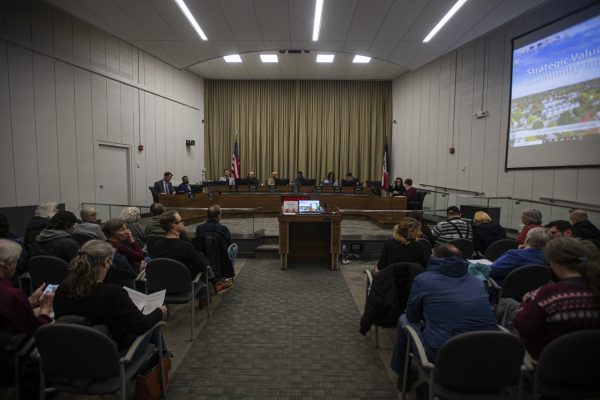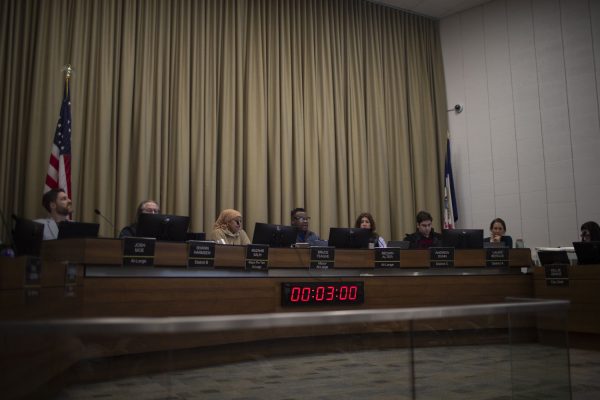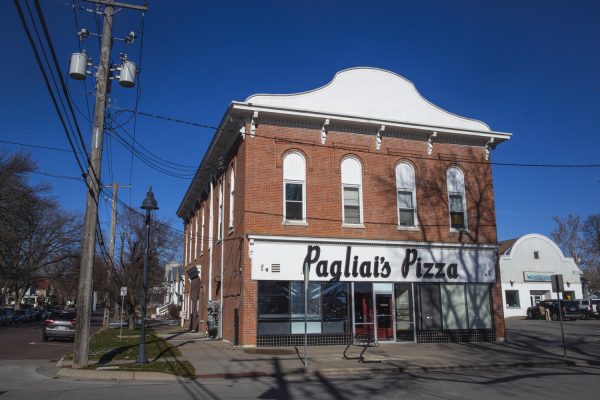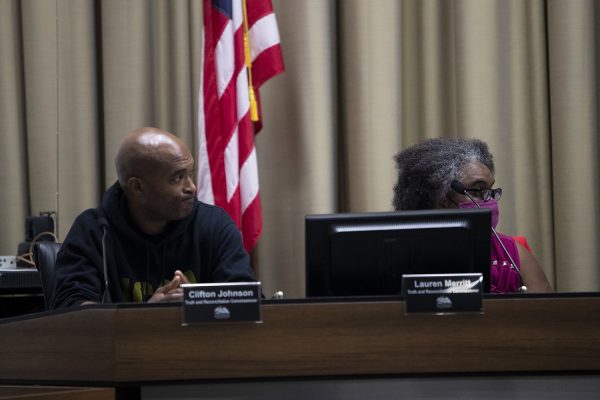Iowa City sees water mains break from aging infrastructure
Iowa water infrastructure experts discuss the challenges of aging infrastructure and what is being done to mend the issue and cut costs.
A drainage pipe is seen in Iowa City on Monday, Feb. 14, 2022.
February 16, 2022
Water main breakages in Iowa City are causing increased spending and labor to update the decades-old infrastructure.
In Iowa City, 47 water mains broke from November 2020 to March 2021 and 20 more have broken this winter.
Water main repairs cost an average of $4,000 to $5,000, and usually require around six hours of labor from seven maintenance workers, said Michael Willis, a senior maintenance worker for City of Iowa City Water Division.
Willis said the number of breaks per year tends to move cyclically.
“We average 60 breaks a year,” Willis said. “We can be as high as 81 or 82. And if we have really good conditions and nice even temperatures, we could be as low as 30 or 40.”
Breakages during the winter are generally because of ground heave, the movement of soil caused by repeated thawing and freezing, placing added tension on water mains, Willis said.
Other contributing factors include pipe age, corrosion, and pipe material, Willis said.
Some of Iowa City’s water mains date as far back as the late 1800s, he said. Most of the recent breaks, however, occurred in those installed in the 1960s and 1970s.
“Post-World War II, there was an iron shortage,” Willis said. “So, they were looking for ways to make the water mains thinner.”
Justin Clausen, public works operations manager for the City of Ames, said the shortage was further extended by the Korean War and to an extent, the Vietnam War.
Ames averages around 32 main breaks per year, Clausen said, many of which occur in pipes installed during the post-World War II era from the 1950s through the 70s.
“The water mains from the 20s and 30s may not be what you want from a capacity standpoint or firefighting standpoint, because those are usually smaller water mains,” he said. “…But from a structural standpoint, they’re actually in better shape than some of those from the ‘50s and ‘60s.”
Clausen said weakened water mains are also more vulnerable to breakages from water hammer, the sudden stoppage in water movement, caused by a closed valve.
Willis said capital improvement projects allow the Iowa City water department to replace weaker portions of water mains top to prevent breaks.
“There’s always more water mains that need to be replaced than we have funding available,” Willis said.
The majority of the newly installed mains are made out of plastic and have had no issues with breaking, he said.
Greg Metternich, water superintendent for the City of North Liberty, said during his 26 years on the job, his city has only experienced three water main breaks, all of which were caused by human error. He said North Liberty’s water main system is primarily made of plastic.
“[Plastic] is going to give you a little bit more leeway when the ground starts moving around,” Metternich said.
Metternich said the oldest parts of North Liberty’s water mains were built in the late 1970s when plastic water mains were starting to gain widespread use.
Clausen said Ames has also been installing plastic water mains as well.
“Our percentage of plastic water mains is probably close to 45 percent,” he said. “…And thus far [it] has proven very well for us.”













